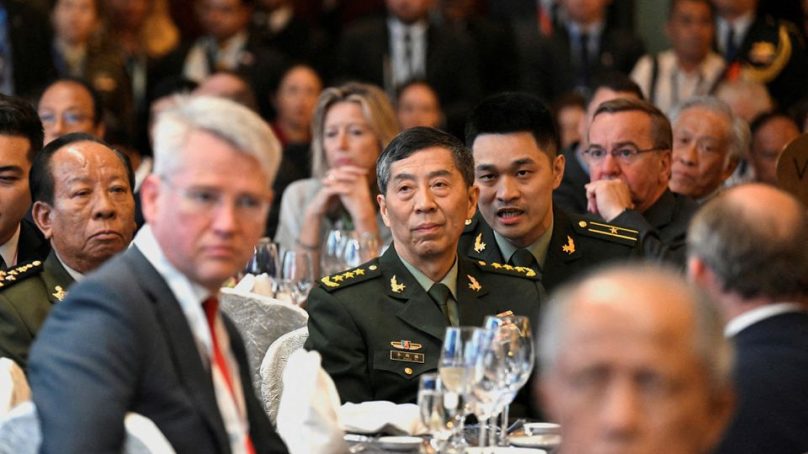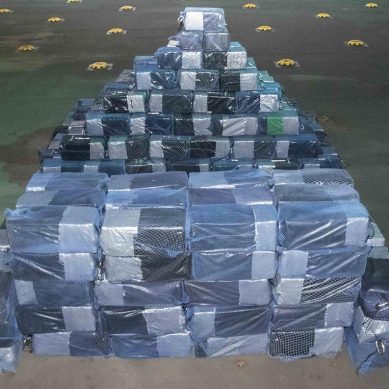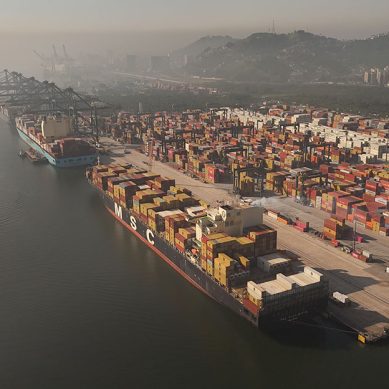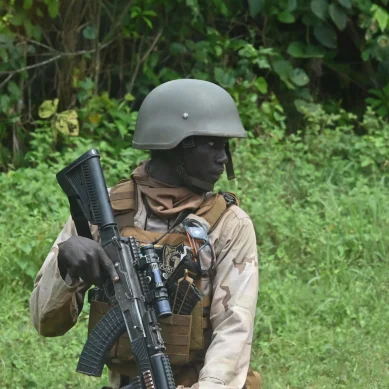
The disappearance of Chinese Defence Minister Li Shangfu highlights the opaque and complex nature of the People’s Liberation Army (PLA), diplomats and analysts say.
It was reported on Friday that Li is under investigation over the corrupt procurement of military equipment during his previous role. Eight other senior officials are also being investigated. His fate has not been officially explained.
In the Chinese system, the Minister for National Defence is seen as significantly less powerful than the US defence secretary and many international equivalents. The position is essentially a diplomatic and ceremonial role without a direct command function.
Even so, Li is among the six military officials under Commander-in-Chief and President Xi Jinping on the core Central Military Commission (CMC) and is one of five State Councillors, a post outranking a regular cabinet minister.
An aerospace engineer who worked in China’s satellite programme, Li was seen as technocrat who helped implement Xi’s modernisation vision for the PLA, military attaches and analysts say. The PLA is the armed wing of the ruling Communist Party and, according to the Pentagon’s annual report on China’s military, “does not directly serve the state but is rather under the direct control of the party”.
As Li rose through his career to this point, he would have been vetted to ensure he was absolutely loyal to the party and to Xi.
The PLA still operates an active cadre of political commissars who flank the command chain, tasked with ensuring loyalty, unity and morale. The commissar system does not have clear equivalents outside traditional Communist militaries.
The CMC, meanwhile, is the party’s highest-level decision-making body on military matters.
“Since becoming CMC Chairman, Xi Jinping has implemented multiple reforms reducing PLA autonomy and greatly strengthening party control over the military,” notes the Pentagon report, which was released in November 2022.
That adds an extra layer of opacity beyond routine military secrecy, according to foreign defence attaches who scrutinise the PLA.
The PLA is already the world’s largest fighting force and growing more capable and modernised. As it absorbs new weapons, its system is changing too, with the creation in recent years of new unified regional commands and a Strategic Support Force to cover its space and cyber warfare capabilities – a body Li was deputy commander of in 2016.
As the PLA’s power and reach expands, foreign militaries are eager to learn more about how it functions and the strategic intentions of its leadership – efforts that underpin military-to-military to diplomacy.
The disappearance of Li has raised concerns among some diplomats and analysts that Chinese military outreach is being trumped by an internal security clampdown. US defence chiefs are eager to restore routine communications with their Chinese counterparts amid regional tensions.
Li, who was sanctioned by the US in 2018 over the purchase of Russian weapons, shunned formal discussions with US Defence Secretary Lloyd Austin in Singapore in June.
After weekend talks between White House national security adviser Jake Sullivan and Chinese Foreign Minister Wang Yi in Malta, US officials said they noted “limited” signs that the communications chill could ease.
Even if China announces a new defence minister and allows them to meet Austin, some analysts say a more senior figure, such as CMC vice-chairman and close Xi ally Zhang Youxia, would be a figure on a more equal footing.
Given the upheaval, an international security conference Li was due to host in October is now being closely watched. If Li does not appear at the upcoming Xiangshan Forum, Beijing’s biggest defence diplomacy outreach event, it could mean that he is still being held for investigation.
Diplomats say China is set to hold the forum in the latter half of next month, but has not sent invitations – late by China’s standards. Billed as Beijing’s version of the Shangri La Dialogue, the Xiangshan Forum is a high-level conference through which China tries to shape global discussions on defence and security issues.
When the forum was last held in-person in 2019, more than 530 defence and military officials and scholars attended, including defence ministers from 23 countries. The Chinese defence minister would typically give the keynote speech at the forum and meet with delegations.
- A Reuters report










